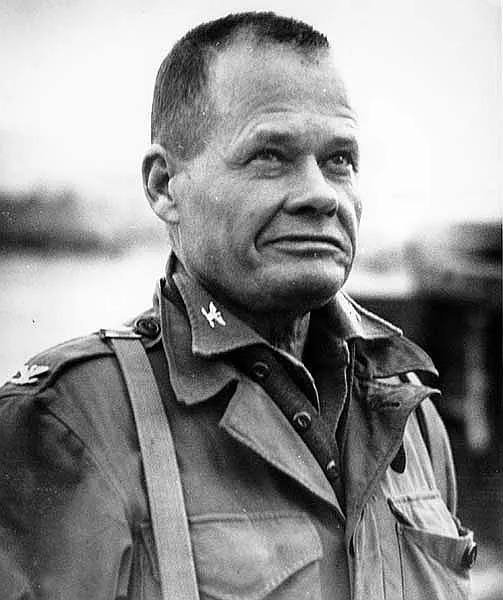Marine Corps legend Lt. Gen. Lewis “Chesty” Puller is known today for his heroics and his chest full of medals, but some Marines claimed in 1984 that the nickname was a reference to Puller’s metal ribcage, a prosthetic that was placed there after his chest was shot and chopped up by Haitian rebels.
You heard that right: The claim was that Chesty had a metal skeleton like the Marvel hero Wolverine.

His nickname, “Chesty,” actually came from his impressive physique and stance, according to a Marine Corps article originally published in 1948 when Puller was a major and the acting commander of a battalion.
The writer of the article, Marine Sgt. Nolle T. Roberts, goes on to describe some stories that Puller’s men had added to his nickname after the fact, including the story of the Wolverine ribcage:
The nickname, “Chesty,” was a natural in view of the colonel’s ramrod stance and belligerent appearance and nature. However, the men of the wartime First Division boasted that Col. Puller had a false “steel chest,” apparently replacing the natural bone structure which had been hacked away by machette-swinging bandits in the Banana Wars. A few claimed that he developed the chest from shouting commands above the noise of battle.
Puller’s chest was likely made with steel because the Army was hoarding all the Adamantium to eventually create Wolverine.
For his part, Puller didn’t quite seem to understand the nickname or the stories surrounding it. In a 1954 letter to Maj. Frank C. Sheppard, Puller wrote:
I agree with you 100% I had done a little soldiering previous to Guadalcanal and had been called a lot of names, but why ‘Chesty?’ Especially the steel part?
The “little soldiering” that Puller is referring to included combat deployments to both Haiti and Nicaragua. Puller supported government forces in Nicaragua and earned his first two Navy Crosses leading units of local fighters against numerically superior rebel forces. So, “a little soldiering” was likely tongue-in-cheek, and it’s easy to see why Puller’s men may have seen him as a man of steel.
While Puller may not have understood the nickname, it’s become a part of Marine Corps culture. Puller is more commonly known by his nickname “Chesty” than by his actual name.


